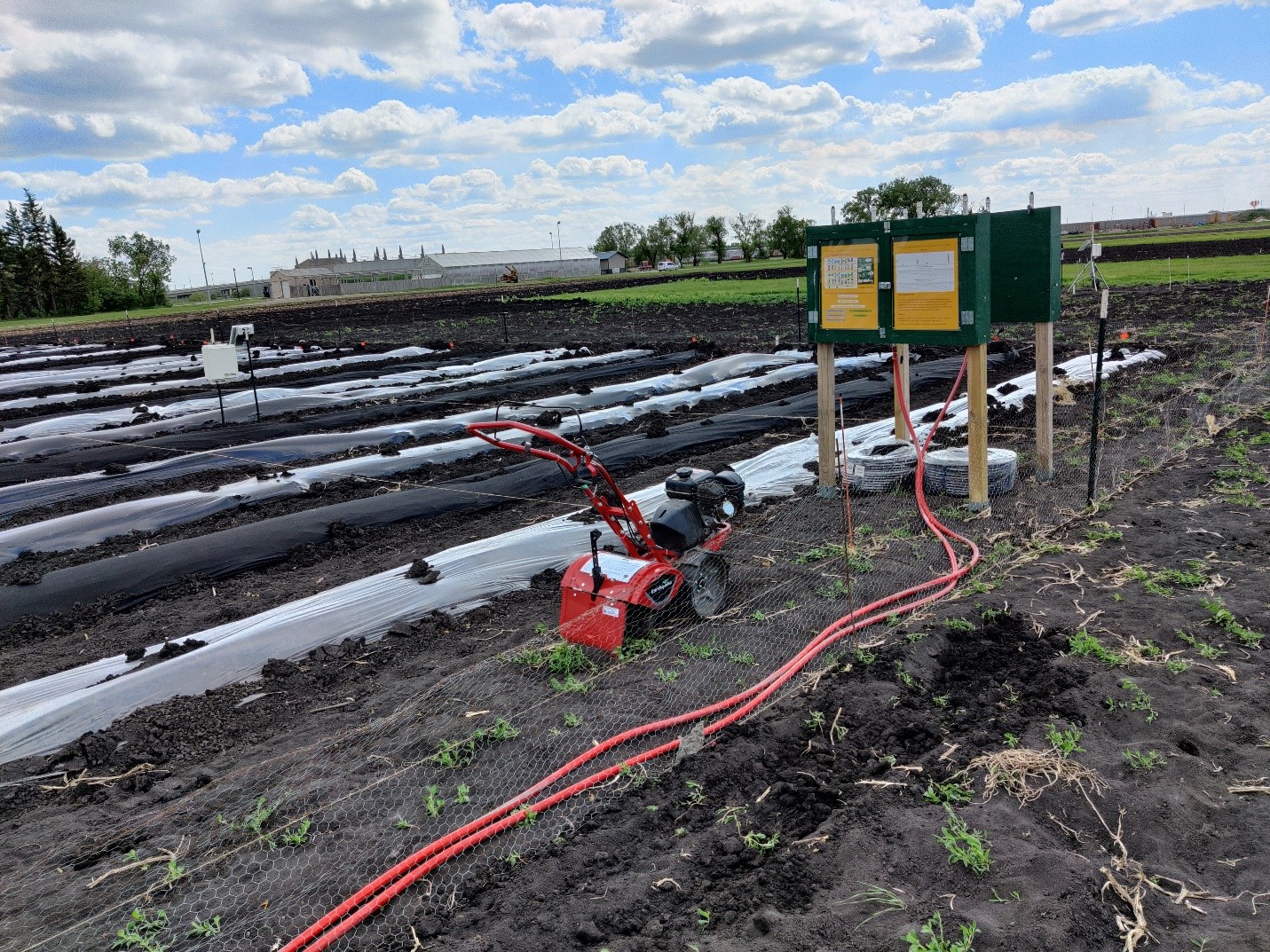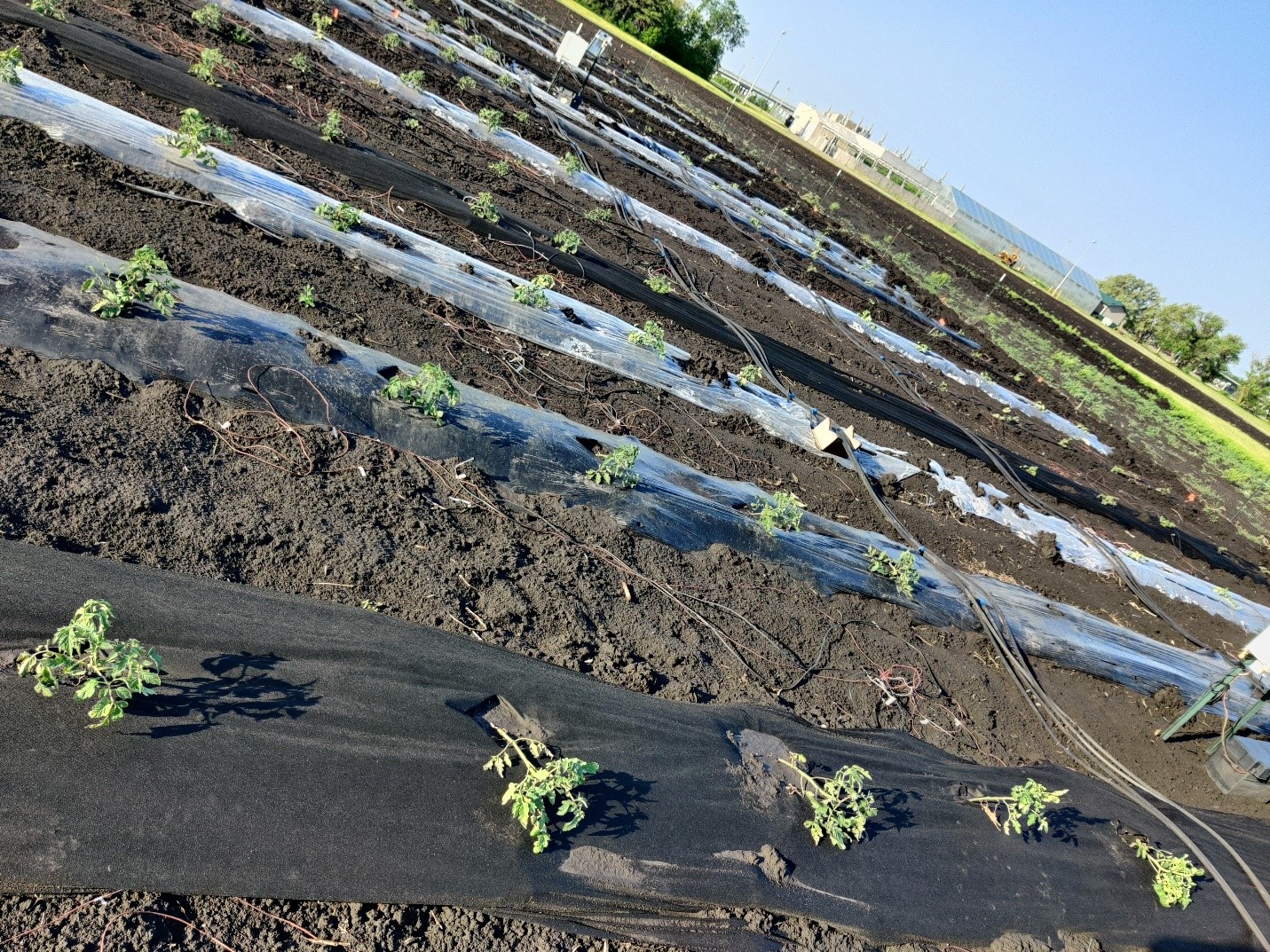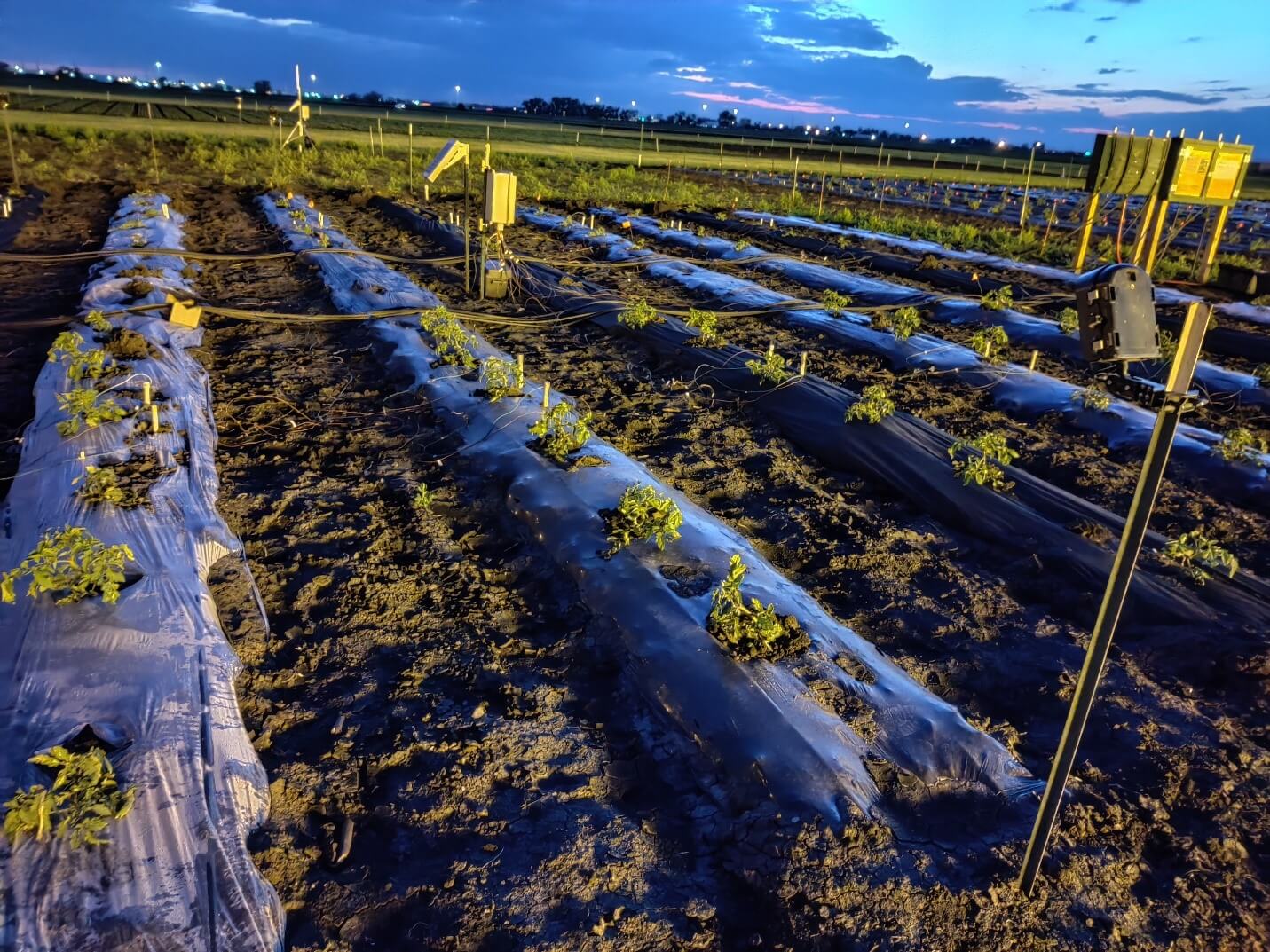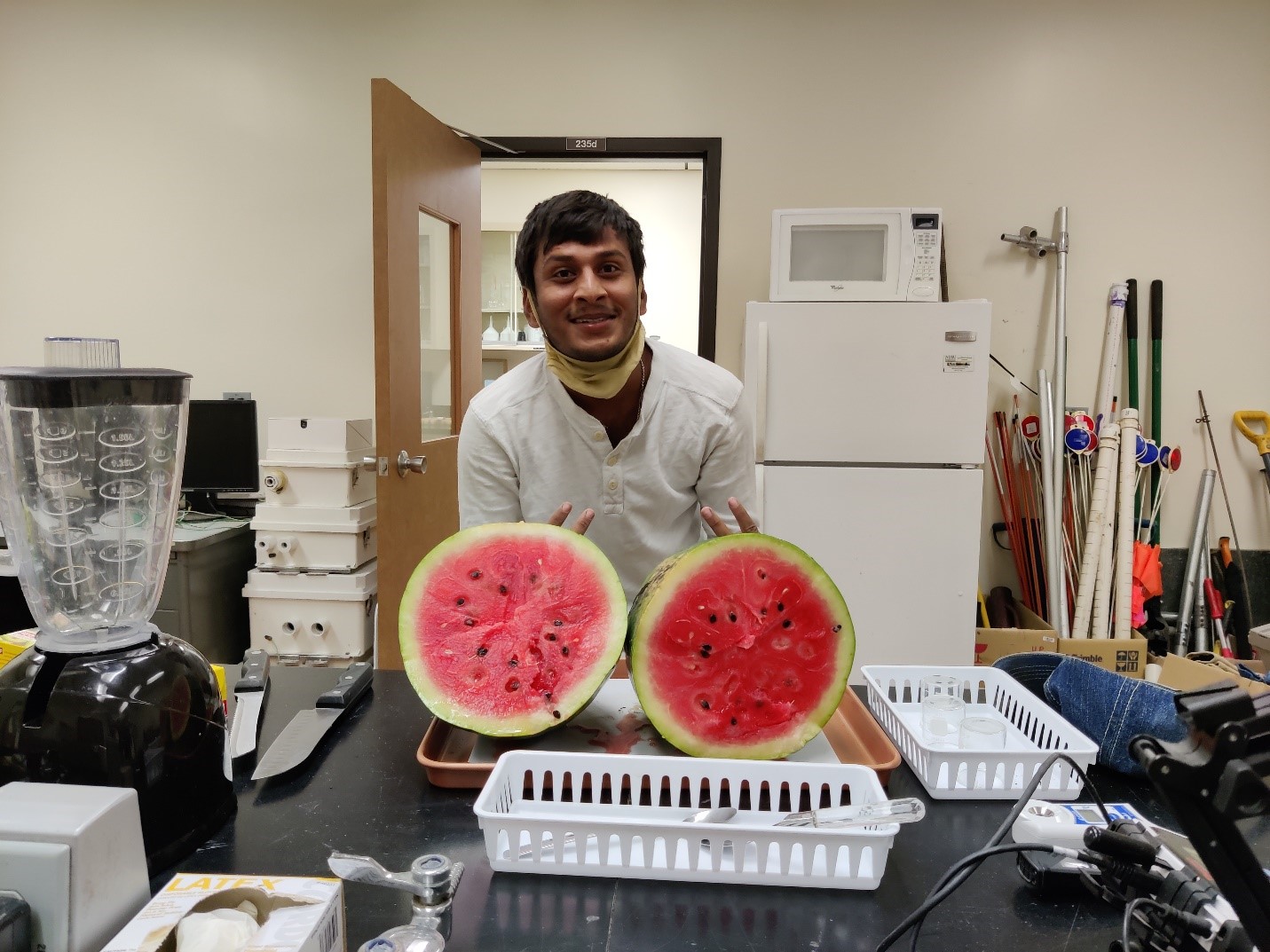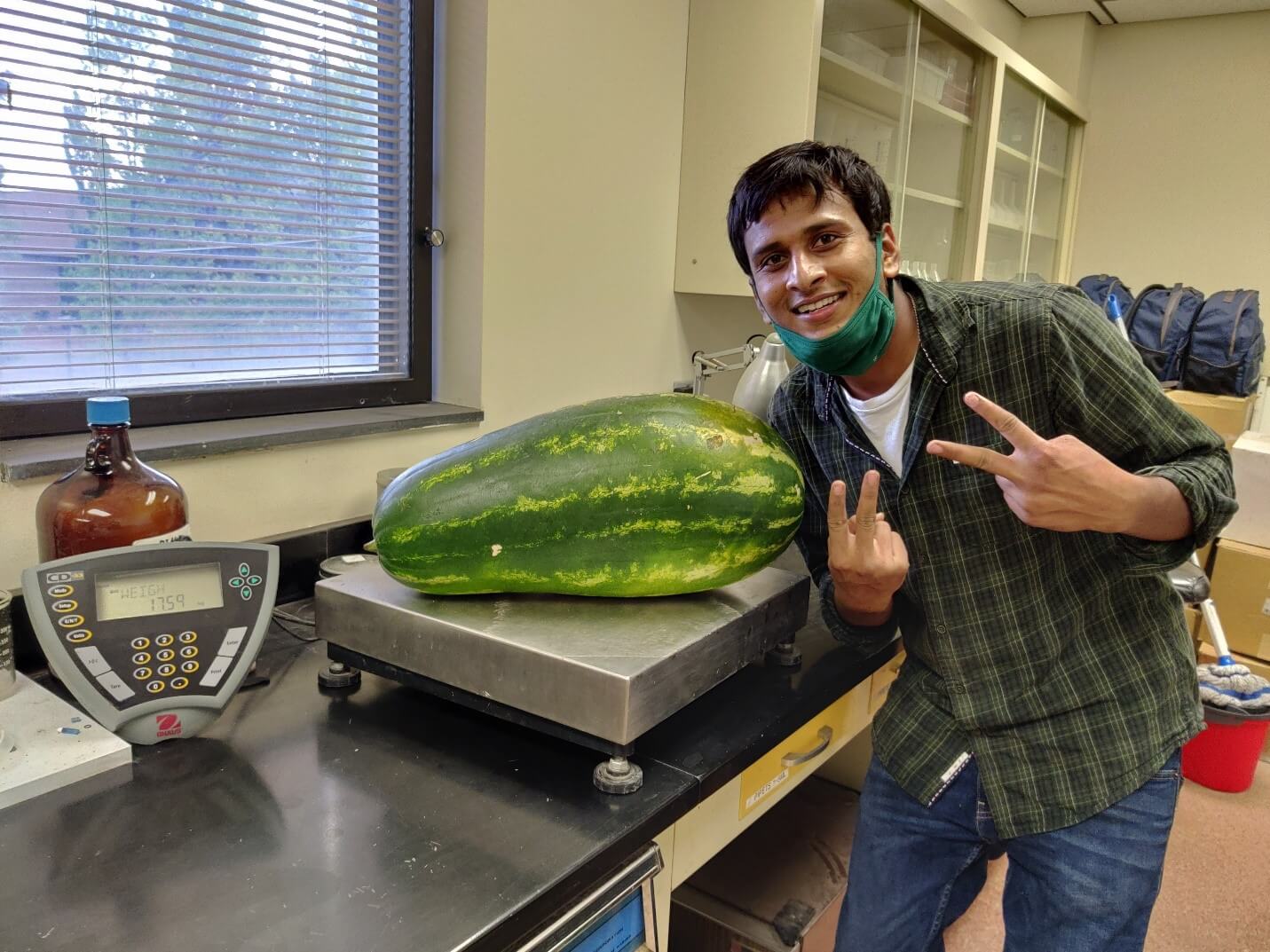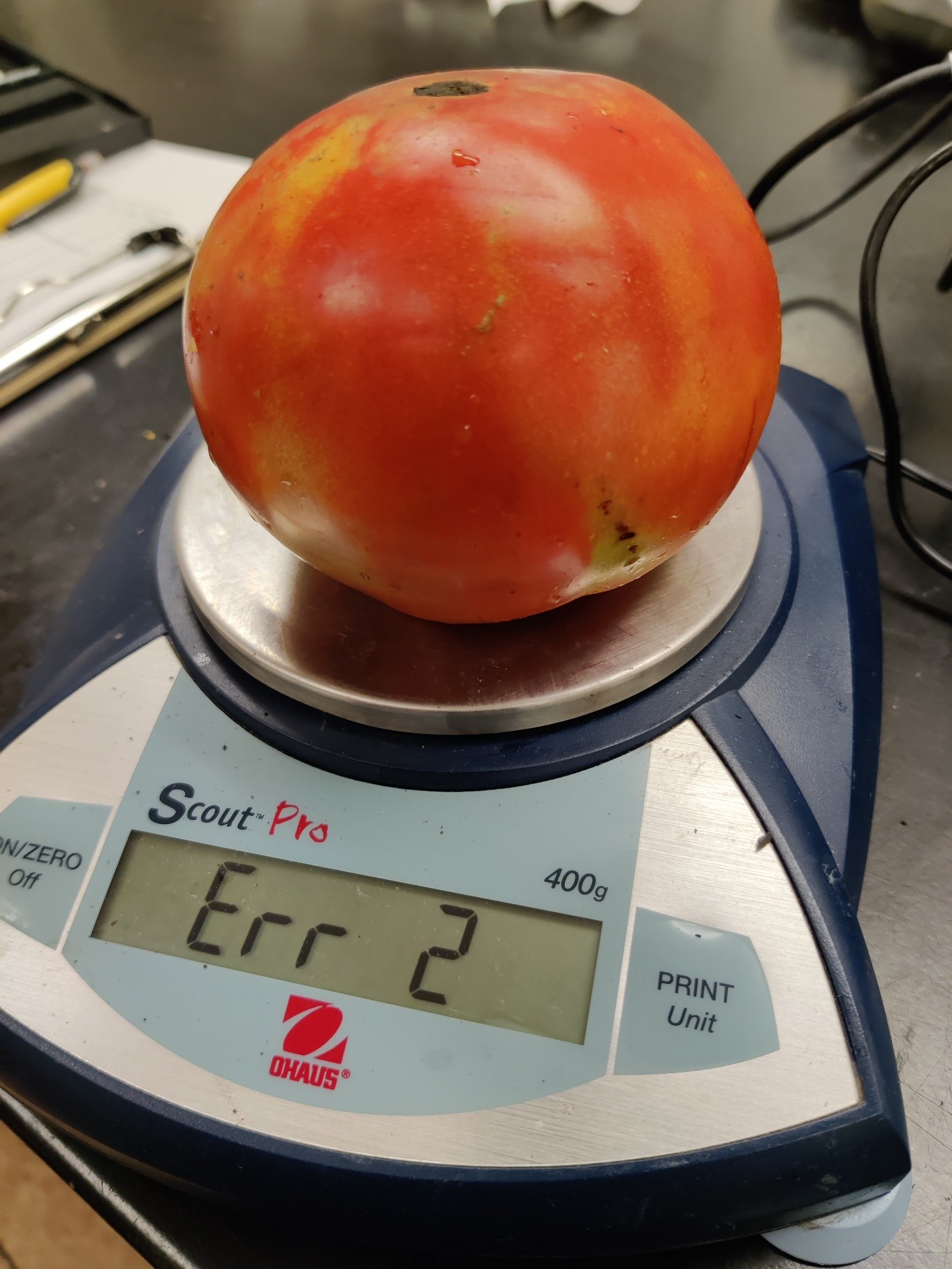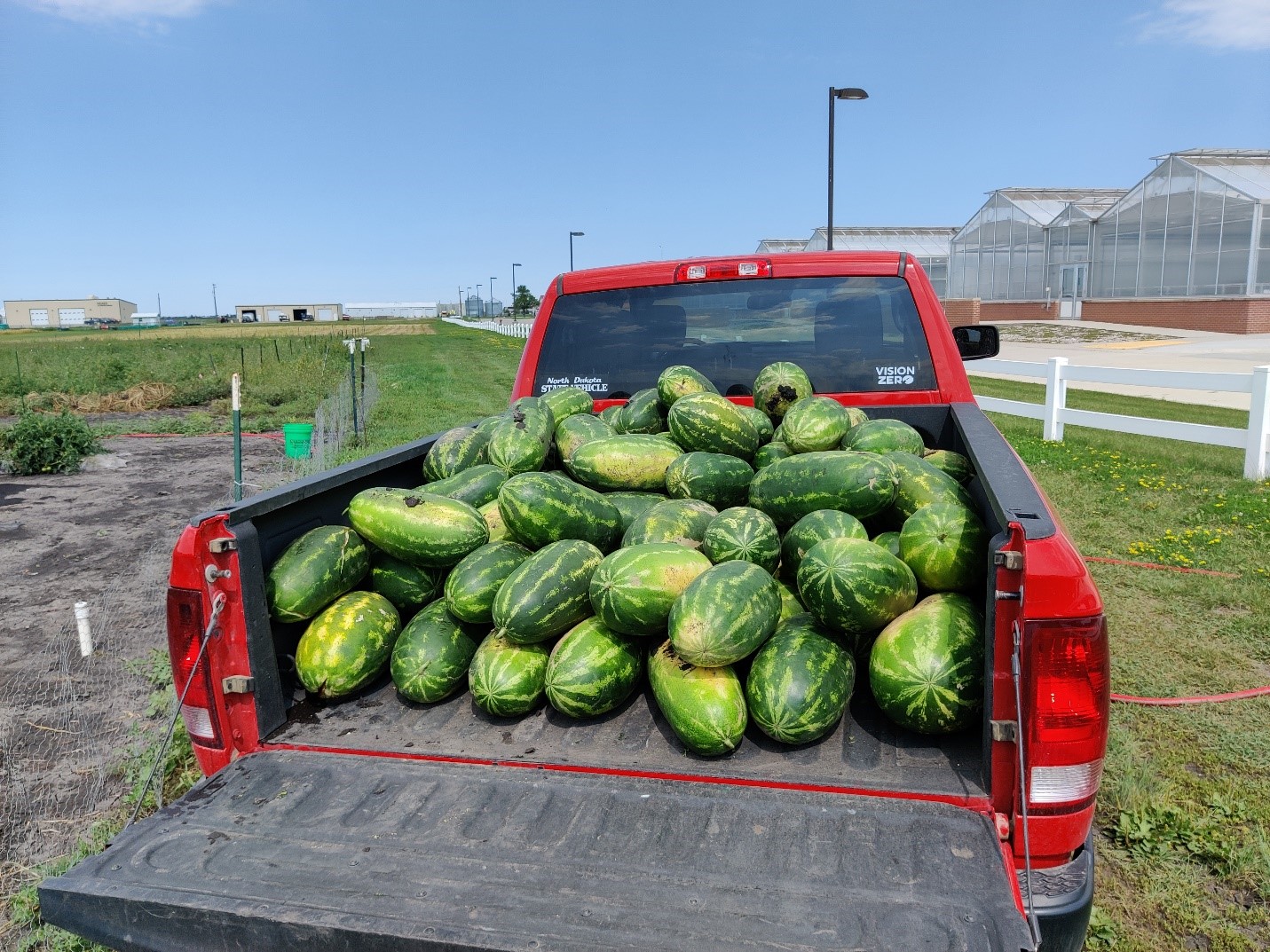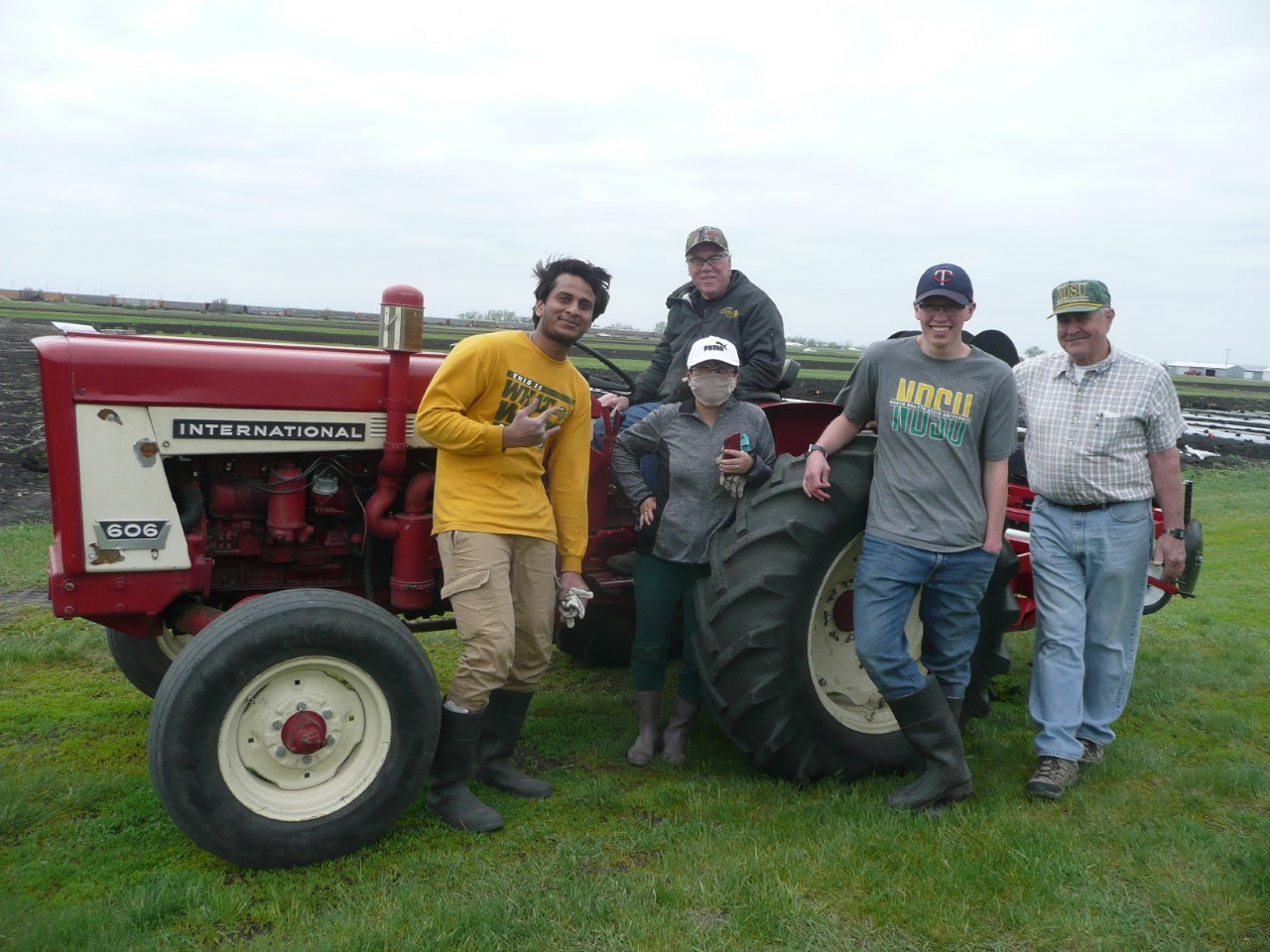Automatic sensor-controlled drip irrigation under mulches for tomato and watermelon productions
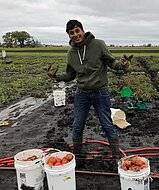
Uday Bhanu Prakash Vaddevolu is a Ph.D. student in the Agricultural and Biosystems Engineering Department, North Dakota State University (NDSU). Dr. Xinhua Jia, Professor is his advisor. Uday did his Master of Technology in Soil and Water Engineering from Kerala Agricultural University, Kerala, India, and Bachelor of Technology in Agricultural Engineering from Acharya N.G. Ranga Agricultural University (ANGRAU), Andhra Pradesh, India. Uday’s dissertation research is to build a soil water potential-controlled irrigation system and conduct field experiments to test the irrigation system.
Automatic sensor-controlled drip irrigation under mulches for tomato and watermelon productions
Objectives: The main objective of his dissertation research is to build an automatic irrigation system under mulches for tomatoes and watermelon production in North Dakota.
The specific objectives are:
- Design and built a soil water potential-controlled drip irrigation system under three types of mulches and no mulch.
- Test the automatic irrigation system under different mulches for tomato (celebrity variety) & watermelon (sangria variety) and also to compare the yield and quality of the produce under different treatments.
- Two-stage calibrations for massive watermark potential sensors in guiding irrigation scheduling.
- Study the soil and water behavior under different treatments for tomatoes and watermelon using the HYDRUS model.
- present the results of the research and take the benefits of using drip irrigation along with the mulches for vegetable production in North Dakota to graduate/undergraduate students, faculty, staff, and farmers.
Automatic Soil water potential controlled drip irrigation and mulches for tomato and watermelon productions:
An automatic soil water potential-controlled drip irrigation system was developed using the Watermark sensor Electronic module (WEM-B) (Irrometer, Riverside, CA), battery powered node controller (Hunter, San Marcos, CA), solenoid valve (Hunter, San Marcos, CA), and watermark sensor (Irrometer, Riverside, CA). Two field experiments were conducted in Summer 2019 and 2020 to test the irrigation system with two irrigation regimes (drip irrigation and no irrigation) and three types of mulches (black plastic, clear plastic and landscape fabric mulches) along with no mulch treatments for tomato and watermelon productions. Each field experiment was conducted with randomized 48 plots with three replications of each treatments. Preliminary results obtained from the 2019 field experiment were presented in oral presentation and published in a conference paper in the American Society of Agricultural and Biosystems Engineering (ASABE) Annual International Meeting (AIM), 2020.
Two-Stage Calibrations for Massive Watermark Soil Water Potential Sensors in Guiding Irrigation Scheduling.
In 2019 and 2020 field experiments, 96 watermark soil water potential sensors and 96 soil temperature sensors were installed at 15 and 30 cm deep to monitor the soil water potential variation throughout the experiment. Watermark sensors need to calibrate using precise sensors to make sure watermark sensors are accurate and also to determine the volumetric water content equivalent for the watermark sensor readings. An experiment was conducted in Summer 2020 to calibrate the watermark sensors (Irrometer, Riverside, CA) using TEROS 21 soil water potential sensor (METER Group, Pullman, WA) and Time Domain Reflectometer (TDR 135H) sensors (Acclima, Inc. Meridian, ID). TEROS 21 (METER Group, Pullman, WA) sensors were calibrated using the accurate soil moisture sensors i.e., TDR 135H (Acclima, Meridian, ID) sensors in the first stage. Then, 133 watermark sensors (Irrometer, Riverside, CA) were calibrated using TEROS 21 (METER Group, Pullman, WA) sensors in the second stage. The preliminary results obtained from the experiment were presented in the 2020 ASA CSSA & SSSA International Annual Meeting. Another experiment needs to be conducted to complete the two-stage calibration of a large number of watermark sensors (Irrometer, Riverside, CA).
Soil and water relationship under different treatments for tomatoes and watermelon using HYDRUS model.
Soil and water behavior are one of the important and interesting processes in agriculture which determines the need for irrigation. Thus, a field experiment was conducted in 2020 to monitor the surface and subsurface dynamics by installing TDR 135H (Acclima, Meridian, ID), TEROS 21 (METER Group, Pullman, WA), Hydra probe (Stevens Water Monitoring Systems, Portland, OR) and watermark sensors (Irrometer, Riverside, CA) at four different depths. At the same site, an infrared thermometer, net radiometer, air temperature, wind vanes, anemometer and humidity sensors were installed to monitor the energy flux variation above different mulches. Data was collected for three different mulches and no mulch plots during three clear sky days and on a rainfall event. Another field experiment might need to conduct to collect the surface and subsurface dynamics under different mulches to develop and study the soil water dynamics using HYDRUS software.
Publications/Presentations/ Trainings
Vaddevolu, U.B.P., J. Lester, T. F. Scherer, C. Lee, and X. Jia. 2020. Automatic sensor-controlled drip irrigation under mulches for tomato and watermelon productions. 2020 ASABE International Meeting, July 12-15, 2020. Omaha, NE. Paper No. 2001035.
Vaddevolu, U.B.P., X. Jia, T. F. Scherer, and C. Lee. 2020. Automatic sensor-controlled drip irrigation under mulches for tomato and watermelon productions. 2020 ASABE International Meeting, July 12-15, 2020. Omaha, NE. Virtual Meeting. Presentation by Vaddevolu
Vaddevolu, U.B.P., and X. Jia. 2020. Two-stage calibrations for massive watermark potential sensors in guiding irrigation scheduling. 2020 ASA-CSSA-SSSA International Annual Meeting, Nov. 9-13, 2020, Phoenix, AZ. Virtual Meeting. Presentation by Vaddevolu.
USDA selected our research among the funded projects and wrote a blog about our research (https://www.usda.gov/media/blog/2020/08/17/specialty-crop-block-grant-program-and-automation-explored)
Completed a short course on HYDRUS software conducted by Dr. Jirka Simunek.
Submitted an abstract to present about research at the 2020 North Dakota Water Quality Monitoring Conference, which was postponed.
Presented the research to growers/farmers/students through field days, outreach, and education programs.
Acknowledgement:
- North Dakota Department of Agriculture.
- North Dakota Water Resources Research Institute.
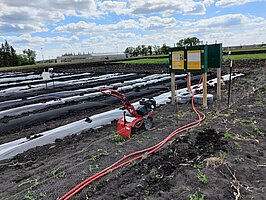
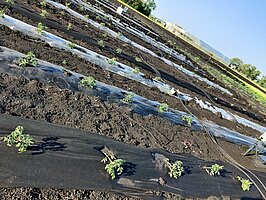
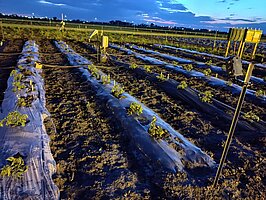
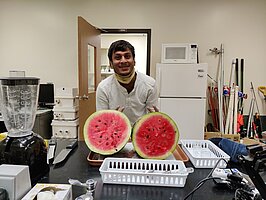
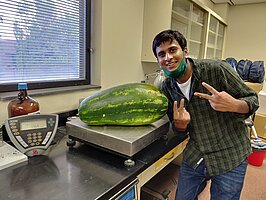
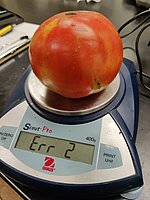
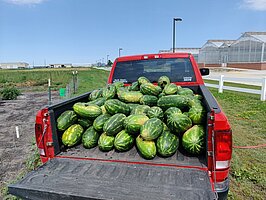
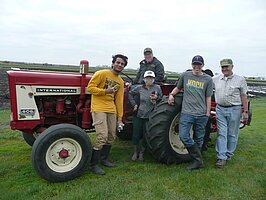
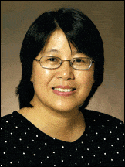
Xinhua Jia, P.E., Professor
Morrill Hall Room 204
Department of Agricultural and Biosystems Engineering
North Dakota State University
NDSU Dept. 7620PO Box 6050
Fargo ND 58108-6050
Phone: (701) 231-6453
E-mail: xinhua.jia@ndsu.edu



